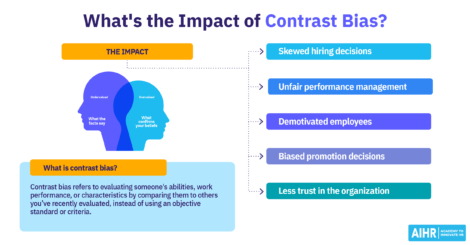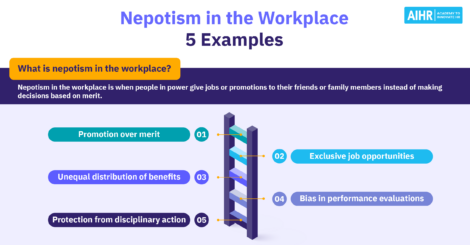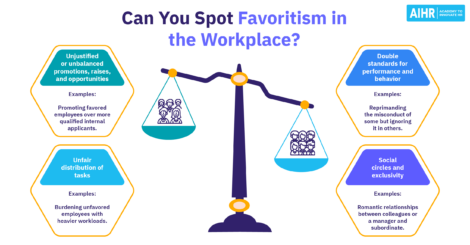What are Microaffirmations? Inclusivity Through Small Gestures

People do their best work in a positive and welcoming environment, which is why microaffirmations are so important. Microaffirmations are small gestures to indicate your respect for your peers on an everyday basis. When people receive microaffirmations in the office, they know they can trust their managers and coworkers. That trust drastically alters their output — employees who trust their company are 260% more motivated to work and are 50% less likely to look for another job, according to a recent study from the Massachusetts Institute of Technology.
But even though microaffirmations can have a significant impact on an office’s health and happiness, people aren’t always sure how to give them and when to do it. Here’s a breakdown of everything you need to know about microaffirmations.
Contents
What are microaffirmations?
Microaffirmations vs microaggressions: The differences broken down
The positive impact of microaffirmations
Examples of microaffimations in the workplace
Implementing microaffirmations in the workplace
What are microaffirmations?
Many have heard of microaggressions in the workplace: tiny ways that people make others from underrepresented groups feel uncomfortable or belittled, even from well-meaning people. Microaffirmations are the opposite. These are little things anyone can do to make others feel respected, valued, and included. There is a range of microaffirmations, from publicly acknowledging others’ contributions, actively listening to people with a smile, inviting people on both social outings and work collaborations, and more.
Microaffirmations are crucial when it comes to building a workplace culture that’s open and inclusive. People from underrepresented groups want to work at a place where they’re valued, and microaffirmations can help make that happen.
It’s incredibly important to have underrepresented groups in a company. Companies with diverse leadership actually bring in more profits than those without. One McKinsey study found companies in the top 25 percent in gender diversity tend to out-earn companies in the bottom 25% in gender diversity by a whopping 25%.
This isn’t just because it can lead to a more profitable business. It’s also necessary to attract new top talent. Gen Z is entering the workplace, and a poll by Monster found over 80% of Gen Z feels a company’s commitment to diversity practices is a major factor when selecting a job.
Simply put, if you want to have the best employees, make the most money, and have the happiest workplace, you need to build an inclusive environment — and encouraging workers to employ microaffirmations is an easy way to help do that.
Microaffirmations vs microaggressions: The differences broken down
Microaggressions and microaffirmations are polar opposites. While microaffirmations are gestures that will create a stronger and more inclusive office, microaggressions are small or indirect ways to discriminate against someone and will lead to an unpleasant work environment.
Here’s a breakdown of the way the two actions contrast against each other.
Microaffirmations Microaggressions Gestures that make people feel appreciated and valued for their contribution to the workplace Gestures that insult and belittle people, especially in a way that mocks gender, sexual orientation, race and ethnicity Smiles and friendly behavior that creates a feeling of camaraderie among coworkers Inappropriate jokes towards another person or at a group’s expense Builds a positive work environment where everyone feels included and comfortable Builds a toxic work environment, especially for underrepresented groups Can encourage people to join a company Can lead people to leaving the workplace Helps create a team atmosphere May destroy a team’s momentum Important for inclusivity Enemy of inclusivity
The positive impact of microaffirmations
When people regularly give their coworkers microaffirmations, there are all kinds of positive benefits that can arise. Not only can it impact an individual employee’s wellbeing, but it can also have a major impact on the workplace as a whole.
1. Employees have greater satisfaction within their roles
If you want people to be happy with their jobs, they need to feel like they’re actually making an impact on the company’s bottom line.
In a recent McKinsey study, respondents overwhelmingly agreed work is one of their defining life purposes — but only 18% feel they get as much purpose as they want and 62% said that while they have some purpose from work they’d like more. By employing microaffirmations, you can ensure people see their opinions are valued and their contributions are being noted, which can increase their sense of purpose and lead to greater overall happiness with the company.
2. Each individual will have more confidence to perform their tasks
When someone makes an employee feel like you’ve done a good job — whether it’s by receiving public praise, smiling and nodding as they talk, making an effort to consider their opinions, or asking them to contribute, or what have you — they’ll naturally feel more confident the next time they tackle that task. Feeling more confident isn’t just a nice sensation for the employee in question. It also makes them better in the role.
“Investing the time and energy to understand how to cultivate confidence – without the need of external validation and approval – is how we become the most effective at what we do,” life and confidence coach Savanna Schiavo told Hive. “This is because when we believe in our abilities, what we offer and who we are, we spend less time second-guessing ourselves, articulate our unique messages with greater clarity, precision and ease, and act as leaders in our roles.”
3. Coworkers build stronger relationships with each other
An office should feel like a team, but there is no team when people don’t have a connection with each other. When coworkers are giving each other microaffirmations, they’re showing each other care and respect. That care and respect can lead to better individual relationships which in turn leads to a stronger team vibe.
4. The office is more productive and successful
Yes, it’s nice to for employees to be happier in general. But it does more than just that. When employees feel valued, they’re encouraged to work harder and be more productive. That increase in productivity naturally leads to an increase in success — something every office is ultimately striving for.
The numbers reflect this: The Engagement and Retention Report from Achievers Workforce Institute clearly shows that employees who feel “seen and heard” are more productive and stronger employees overall.
5. A more inclusive and diverse environment can be built
By discouraging microaggressions and encouraging microaffirmations, you make the office a more welcoming place for underrepresented groups, and when a workplace is truly comfortable for people of all races, genders, and ethnicities, you attract better talent from across the board to make the business even stronger.
Emphasis on diversity and inclusion is crucial for a company to thrive, which is why even something as seemingly subtle as microaffirmations is important to spread in the workplace.
Examples of microaffimations in the workplace
There are a lot of different ways to employ microaffirmations in the office — ways that are both public and private. Employees can:
- Recognize the achievements of others and give them praise in front of others.
- Give credit where credit is due. Make sure that each employee who did the work is acknowledged.
- Practice active listening. Smile, nod, and lean forward when someone is talking.
- Make eye contact when others are talking to you as a sign of respect.
- Acknowledge the way people speak about their identity to show you’ve listened and you value how they feel, whether it’s using the right pronoun or mirroring the phrases they use to describe themselves.
- Celebrate major milestones with others. A simple “happy birthday” wish can go a long way.
- Invite people to speak during meetings. If you notice someone’s quiet, ask them to contribute to show you’re interested in what they have to say.
- Similarly, invite people to social gatherings. Don’t leave coworkers out of group lunches, happy hours, or other team-building opportunities.
Implementing microaffirmations in the workplace
Clearly, microaffirmations can make a major difference in a company, but it’s something each individual needs to practice. How can HR professionals make that happen? Well, there are several ways to make giving microaffirmations a common practice in the workplace.
- Educate employees. Employees can’t hand out microaffirmations if they don’t know what they are! Hold seminars to teach everyone in the company about these gestures and how to give them, as well as the positive benefits they’ll have. By educating each individual about it, there’s a greater chance they’ll be spread.
- Emphasize microaffirmations and discourage microaggressions in the hiring process. If you want something to become part of company culture, it needs to be present from the very first step in an employee life cycle. Make sure job descriptions and requirements as well as interview questions and procedures avoid biases and any possible microaggressions to promote inclusivity.
- Make it part of performance feedback. When creating performance feedback instructions, include examples of microaffirmations people can include during this process. That means comments they can make when asked for feedback and practices like active listening during performance review meetings.
- Design inclusive training programs that promote microaffirmations. These kind of gestures and their value should be communicated to employees as often as possible. Hold seminars, run events, and design training programs that emphasize the importance of building a diverse and inclusive environment, and hammer in the many techniques, including utilizing microaffirmations, to make that happen.
- Review company policies to make sure they’re as inclusive as possible. It’s good practice to regularly review internal company policies to make sure they’re as up to date as possible. The next time you do that, ensure policies make it clear microaggressions are never acceptable. You should also make it clear what resources exist for people who’ve been hit with a microaggression. More inclusive company policies will lead to a stronger environment.
- Lead by example as an HR professional. Model the behavior you’d like to see in the workplace. That means considering diversity and inclusion every step of the way, cutting out all microaggressions and putting an end to them if they occur, and offering microaffirmations to every employee. When others see you doing that and the positive effect it has on the office, they’ll make an effort to do the same.
- Provide resources for employees. There are so many meetings and assignments every day that it’s easy for people to forget nuances when learning about something new. That’s why you should have a clear, easy-to-locate spot for employees to find all the information they need about microaggressions and microaffirmations. That way, it’s easy for them to refresh on the finer points when needed.
- Collect feedback and measure the impact microaffirmations are having on the office. It’s important for HR professionals to listen to what people think of what’s going on in the office. Make a concentrated effort to get feedback about the company’s diversity efforts from employees of all levels, whether it’s through regular surveys, informal talks, or scheduled meetings. But it doesn’t stop once you get that feedback. Consider how to respond to employees’ concerns and how to keep moving forward on what’s working.
HR professionals should also determine the actual impact any new measures with microaffirmations are having on the office and be prepared to share that data. When people see the effect of new actions, they’ll be more excited about it, after all.
The bottom line
Microaffirmations — small, subtle gestures to indicate you have respect for someone and value them as a person and employee — lead to happier, more confident, and more comfortable employees, which in turns leads to a better, more inclusive company culture and a more successful business.
Human resources professionals play a major role in making microaffirmations part of the workplace environment, and should train employees to know what they are, recognize when they’re being performed, and utilize them on a day-by-day practice.
FAQs
Microaffirmations are signals that indicate value and respect to build inclusivity.
A simple way to give a microaffirmation is to smile, nod, and make eye contact when someone speaks. Similarly, inviting someone to share their thoughts is another microaffirmation.
A microinequity is a small gesture that devalues a person — for example, checking your emails instead of listening to someone as they speak during a meeting. It indicates you simply don’t care about what they have to say.
A microaggression indicates you don’t respect someone, while a microaffirmation emphasizes that you truly do
Weekly update
Stay up-to-date with the latest news, trends, and resources in HR
Learn more
Related articles
Are you ready for the future of HR?
Learn modern and relevant HR skills, online












